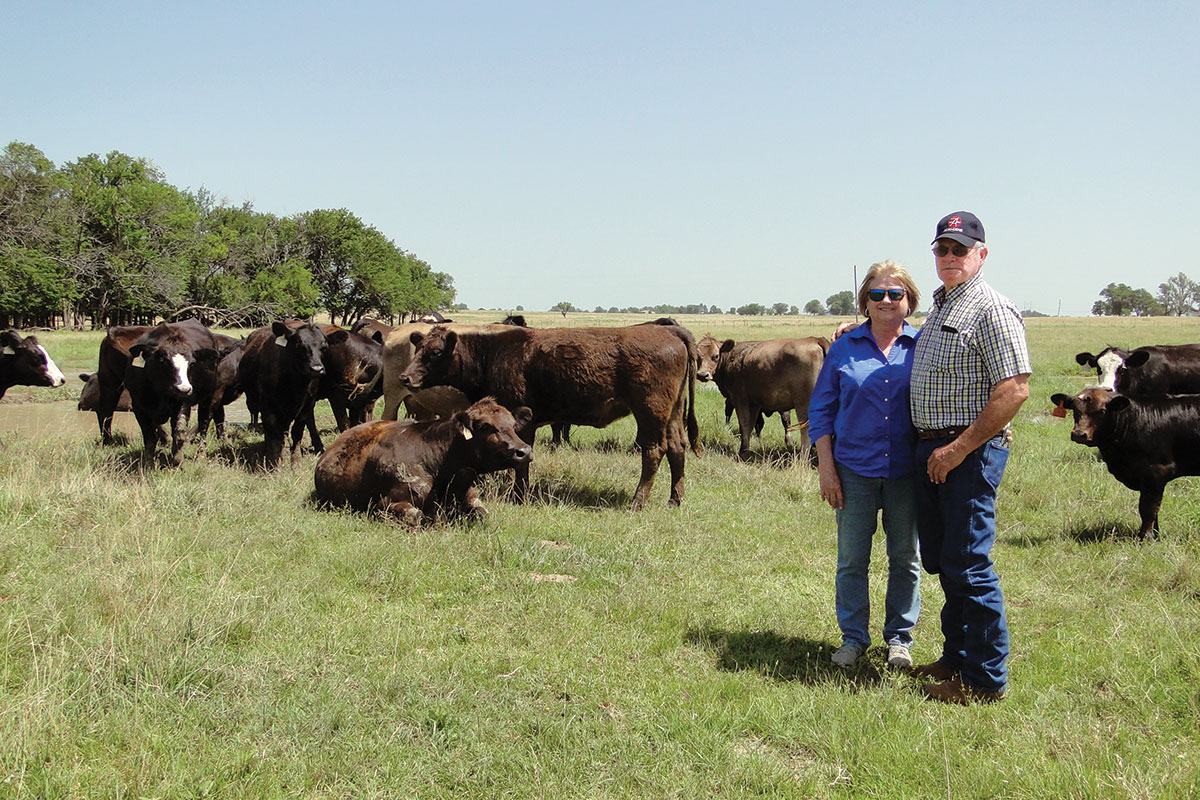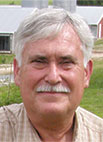
Albert and Joan Thorne continue to include Braunvieh genetics in their three-way cross-breeding program
Albert and Joan Thorne can credit the cattle industry and the Braunvieh breed for many things in their lives, including how they met.
Joan was the office manager at the Braunvieh Association, while Albert was a member of the association’s board of directors.
Because both had grown up with cattle, they were a comfortable fit from the very beginning.
Albert remembers being in sixth grade when his family had to travel 160 miles to plow their wheat fields in Hereford, Texas. He was left alone and in charge of 500 newly arrived calves, which including roping and doctoring 20 to 25 calves a day. Then a quarter-mile of fence broke and the calves invaded a very territorial neighbors’ “crazy cow” herd. Albert rounded up his calves as quickly as he could when the neighbor came barreling down in a Jeep. Afraid the neighbor was going to shoot him, young Albert was surprised when the neighbor complemented him.
When Joan was 8, she competed in the 4-H stocker feeder show with her Hereford steer named Cub. They gave silver dollars to the children as they turned the calves loose in the sale ring. Joan remembers emphatically telling them that she didn’t want their money. She wanted her calf back. She grew up in North Central Nebraska on her family’s 800-cow Hereford ranch. She grew up wrestling calves and swinging a rope at brandings, right beside her brothers and neighbors, who helped each other during calving season.
“That’s probably why I grew up loving the cattle business and cattle people” commented Joan.
The Braunvieh breed originated in Switzerland and distributed throughout the Alpine region. The name means “brown cow” in German. Braunvieh was developed for three purposes: milk production, beef production and as a draft animal. The Brown Swiss dairy breed was developed from the Braunvieh and is touted for excellent milk production and a desirable fat percentage.
“It’s a shame the Braunvieh breed has struggled,” Albert said. “They have excellent traits, but people associate them with dairy cattle because of their brown color. However, we try to retain at least a quarter to half in our herd to retain their excellent beef quality because Braunvieh have an exceptionally large ribeye and low back fat, traits they pass to other breeds.”
Through the years A. W. Thorne Land and Cattle, Inc., showed the Braunvieh breed extensively, winning many breeder awards. They have since quit showing and take advantage of hybrid vigor they get from the combination of their three breeds, Braunvieh, Simmental and Maine-Anjou. The goal is half of any breed with the other two breeds each making up one-quarter of the genetics. The result is an animal that retains good carcass traits, as well as a show ring look.
The Thornes offer a few show heifers, but are focused on maternal traits, such as fertility and good udders. They also offer a few breeding bulls each year. Repeat customers are important buyers in their program. The past four years a family in Texas has purchased 12 steers for carcass and rate of gain contests. The Thornes then use the carcass results to analyze their breeding program.
The couple held production sales in the past, but their main marketing tool today, however, is their website and livestock auction sales. Because they had an extensive embryos and AI program in the past, they have a good inventory of semen and embryos for sale. Meanwhile, they have gone to natural breeding in order to reduce time and labor.
The Thornes keep their own replacement females and select mostly Simmental bulls for their herd. They like the black with white faces, and “added chrome.”
“Our customers love them too, but we don’t select just for color. Our cattle have to be moderately framed and balanced phenotypically,” Joan said.
“We live in fescue country, which can cause feet problems, so soundness is critical. Then, because we do all of the work ourselves, we have eliminated any temperament issues through selective breeding,” Albert said.
The Thornes’ 600 acres are divided into 12 to 13 pastures. Each herd sire has its own paddock when not breeding. When breeding time comes, each bull has a pasture and cows in order to produce the desired genetic mixture. Cattle are moved using a feed truck with Joan in the rear on an ATV with their trusty dog Angel.
The ranch supports both spring and fall calving, though Albert prefers fall for the largest group because calving is easier without the heat and the calves seem to do better. Calving takes place during a 65- to 70-day window, with calves put on creep feed 30 days before fence line weaning. They depend on their cows to raise a calf in 205 days, weighing at least 550 to 650 pounds.
The Thornes cut 600 big round bales annually, with pasture and hay fields comprised of fescue, common Bermuda, clover and lespedeza. An important practice is clipping fescue heads to prevent fescue toxicity.
Through the years, the Thornes have made many friends, including customers and people they met while showing.
“We run a bed, breakfast and bovine facility,” Joan said with a smile. “We live in the middle of nowhere and are halfway to somewhere so we frequently have buyers and friends as guests.”






